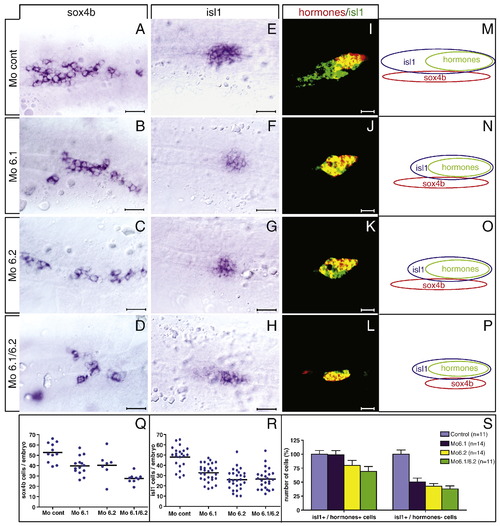
The nkx6 genes are involved in producing/maintaining the endocrine progenitor pool. A–H: WISHs showing expression of sox4b at 18 somites (A–D) and of isl1 at 24 hpf (E–H) in control (A, E), nkx6.1 (B, F), nkx6.2 (C, G), and nkx6.1/nkx6.2 (D, H) morphants. I–L: Double fluorescent WISHs showing expression of isl1 and of all the pancreatic hormone genes together in control (I), nkx6.1 (J), nkx6.2 (K), and nkx6.1/nkx6.2 (L) morphants; Z-plane confocal images. All views are ventral with anterior part to the left. Scale: 20 μm. M–P: Schematic representations (lateral view) of the isl1-, sox4b-, and hormone-expressing cell populations in control and nkx6 morphants. Q: Quantitative analysis of the number of sox4b-expressing cells at 18 somites in control and nkx6 morphants. R: Quantitative analysis of the number of isl1-expressing cells at 24 hpf in control and nkx6 morphants (the horizontal line represents the mean). S: Quantitative analysis of the number of hormone-expressing and hormone-non-expressing isl1-cells at 24 hpf, expressed as percentages (100% being arbitrarily fixed as the number of cells in control embryos), in control and nkx6 morphants. The presented data are representative of at least three reproducible and independent experiments.
|

